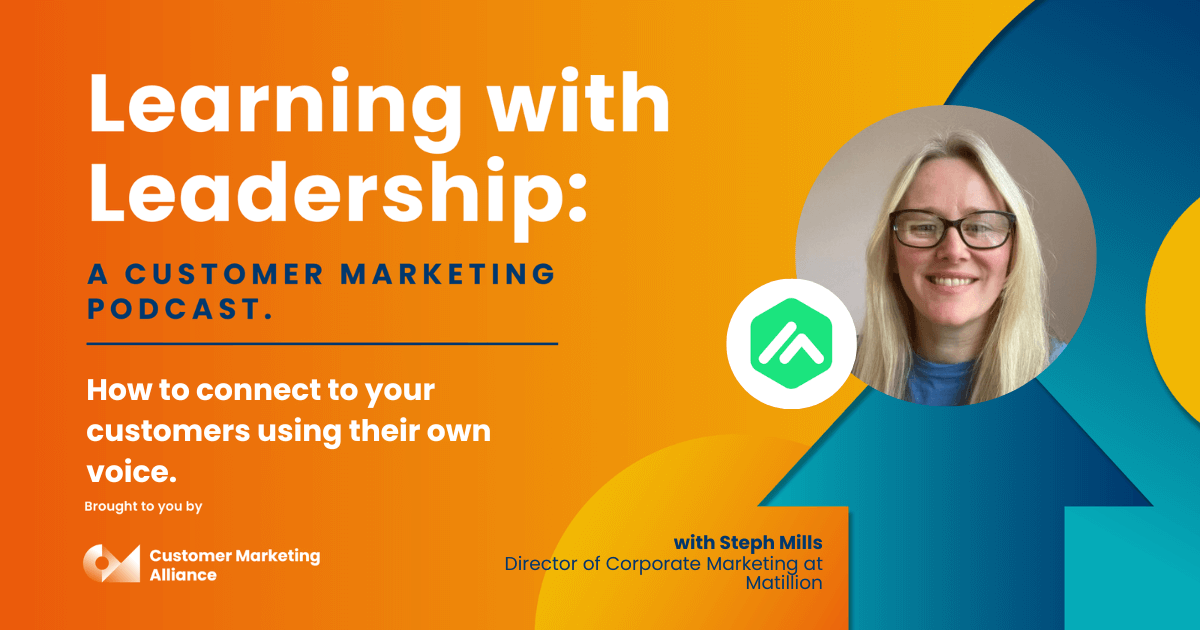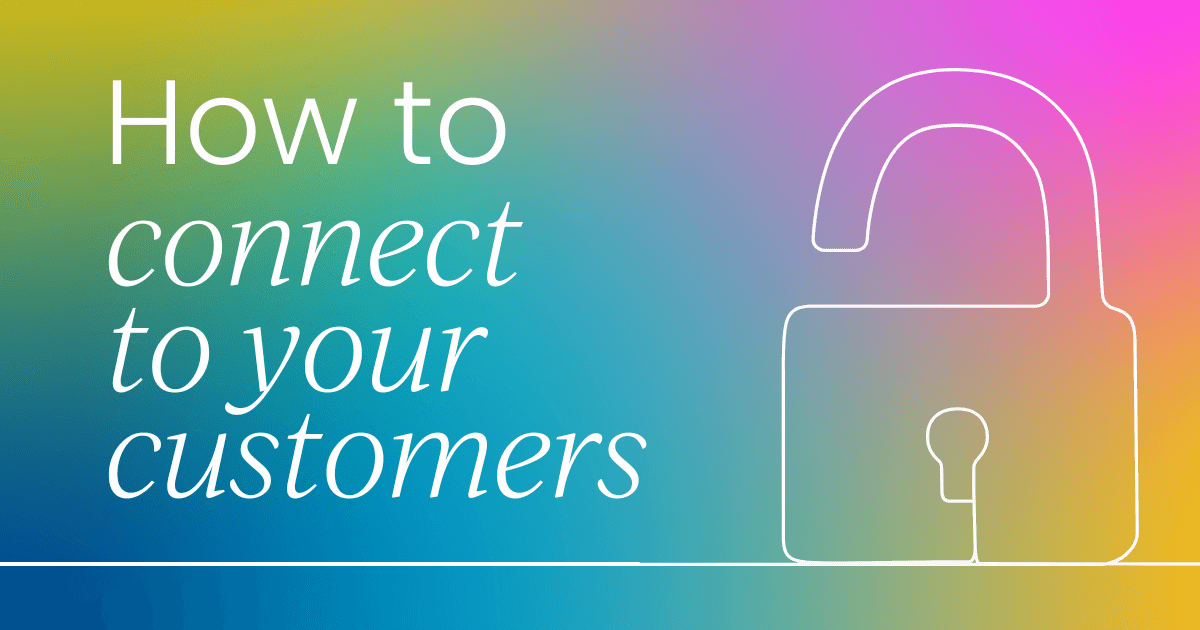If you've ever tried to get customers to tell your story for you, you’ll know it’s harder than it sounds.
Most people don’t wake up thinking, “Today’s the day I advocate for the software vendor I use at work.” And in a world full of automated emails and one-size-fits-all messaging, it’s even tougher to build real, lasting relationships.
But here’s the thing: customers do want to feel seen. They want to feel valued. And when they do, they become your most credible storytellers – sharing your brand not because they were asked, but because they genuinely believe it does what it says.
That’s the space I work in every day. This is how I approach building customer connections that last and stories that actually land.

Telling your story through your customers
As with most advocacy roles, it's your job to tell the story of a product, solution, or company through the voice of its customers.
That means constantly thinking about how you tell your story through the voice of your customers, and how that story connects to our company goals, strategy, and identity.
It's not just about collecting nice quotes or running a few case studies. I think a lot about how we showcase the work we're doing in a way that genuinely reflects our customer obsession.
Most companies say they’re customer-obsessed, but from the outside, that doesn’t always come through.
Building meaningful customer connections
Customer connections are everything. Of course, every part of the business would say that customers are the lifeblood of what we do, but for me, it's not just about connecting – it's about building relationships and constantly strengthening them. And that’s hard, especially in a mostly digital, post-pandemic world.
Whenever I step into a new advocacy role, I start by asking: What are the natural connection points within this company? The advocacy landscape will always look different depending on the company, so I take time to figure that out.
If a company already has an established customer advocacy program, those connection points might include a customer conference, customer awards, or a structured case study process. But sometimes you’re building those things from scratch, and that’s a huge opportunity.
It’s also about collaboration. In my experience, I've worked closely with other teams across the business that already have customer touchpoints and look for ways to converge our efforts. That way, you create a more consistent, seamless brand experience for the customer.
When every interaction they have with us feels connected, it's more meaningful and ultimately more impactful.
Making the brand experience feel consistent
No matter who or what our customers are engaging with, the experience should feel the same.
That’s true for digital communications, in-person conversations, support interactions – everything. Consistency builds trust. It makes each touchpoint feel familiar, which deepens the relationship and reinforces our values.
You want your customers to feel that you can provide them with valuable insights. So you need to make sure every interaction reflects that.
For instance, if you're telling customers that you care about efficiency and insight, then every experience, whether it’s reading an email, using the product, or speaking to someone on our team, should support that feeling.
And it’s not just about consistency across platforms, it’s about consistency across people. A customer shouldn’t feel like they’re talking to a completely different company when they speak to me versus someone else on our team. Everyone should reflect the same voice, tone, and intention.
That’s how you build a strong brand image and a believable, relatable story.
Letting customers tell your story
When you get it right, when the brand is consistent, when the experience feels authentic and valuable – that’s when customers start telling your story for you.
And that’s the real goal.
Because let’s face it: it’s always more credible to hear about a brand from someone who’s actually using it.
If a customer is genuinely excited about your product, their voice is far more powerful than anything you could say as the vendor. It’s natural, it’s trustworthy, and it spreads.
When customers start sharing your story on their own, without being prompted, that’s when you know your advocacy efforts are really working.
All roads should lead to advocacy
When I think about gathering case studies, I start in the same place as I do with customer connections – by mapping out every point where customer information flows through the business.
That could be CRM systems like Salesforce or Gainsight, it might be an advocacy platform, or even customer award submissions where people are already sharing their stories.
It’s about getting a full view of all the ways we’re hearing from customers, and then creating a central place for those insights to converge. Ideally, that central place is the advocacy team.
I always say: all roads should lead to advocacy. Not because we’re trying to control everything, but because it’s better for the customer if advocacy is part of the journey.
When there’s a single place where stories and insights are gathered, it’s easier to spot the right opportunities and to make sure the stories we’re telling are meaningful, strategic, and high impact.
Once those insights are centralized, we can start shaping them into stories. That means thinking about how case studies should show up in the market. We look at the data: are people reading them? Are they converting? What formats work best? And from there, we evolve how we present our customer stories to make them more useful for both the customer and the business.
Ultimately, it’s about bringing together fragmented information, turning it into something powerful, and using that to amplify the voices of our customers in a way that feels strategic and authentic.
Case studies vs. win-loss interviews
If you'd asked me a couple of years ago when to do a case study versus a win-loss interview, I would’ve said it’s all about timing.
Win-loss interviews should take place shortly after the deal is won or lost so you can gather insights on what influenced the outcome. They’re great for generating sales enablement content and refining the sales process.
But the reality, especially in SaaS, is more nuanced now. With things like free trials and self-serve onboarding, prospective customers can start realizing value even before they’ve officially bought the product. That means there are often rich insights to be found much earlier than we used to think.
So the difference between the two isn’t strictly about timing anymore – it’s more about the kind of insights you’re looking for. If you're trying to understand the sales journey, motivations, objections, or decision-making dynamics, then a win-loss interview is the right approach.
But if you're interested in how a customer is using your product to be successful – how they've realized value, even in the early days – a case study makes more sense.
Typically, I’ll start case study conversations around six to eight months after onboarding. That gives enough time for the customer to see some results and for us to gather meaningful insights. But if the customer has seen value early through a trial or pilot, it might happen sooner.
And of course, if it’s a loss, that’s not the right moment for a case study, there’s no success story to tell. In some cases, it makes sense to do both: a win-loss interview right after the deal closes, followed by a case study once the customer is up and running.
This article is based on Stephanie's appearance on the Learning with Leadership podcast. At the time of recording, Stephanie was Director, Customer Advocacy at Matillion.


 6 min read
6 min read
 Follow us on LinkedIn
Follow us on LinkedIn




